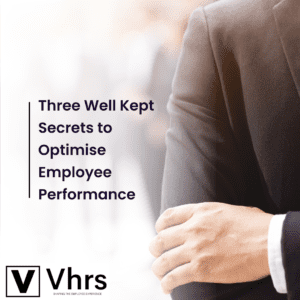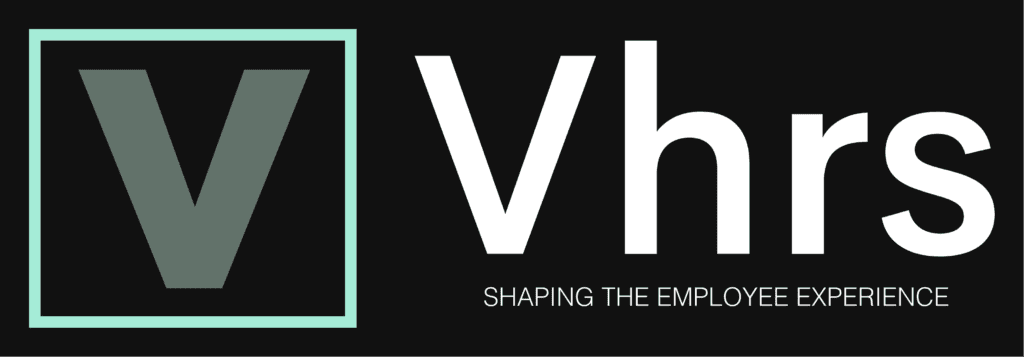
As an HR Consultancy, we provide a full suite of services to support the whole employee journey. This includes recruitment, induction, performance, training, disciplinary and exit processes, with customisable add-ons like employment equity, skills development, leave management and wellness programmes.
Each step in the employee journey plays a crucial role in shaping the relationship between employee and employer. However, there is one area we are particularly passionate about, as we recognise the lasting impact it can have on an employee’s ongoing productivity, and consequently on a business’s bottom line.
With a degree in the HR field, 10 years of experience in the industry, and having managed +1000 employee journeys in the past from corporate and SME background, I can confidently say that performance management is the star service that when done well, can and will have a profound impact on your business.
I have seen how performance processes fail time after time, often perceived as a waste of time from the employees and managers point of view, it ends up being a tick box exercise.
I have developed a serious passion for performance, and have optimised our process to deliver value to the employee, the manager, and the business as a whole. And in true VHRS fashion, I’m here to spill the beans.
The 3 Golden Rules to Running a Perfect Performance Procedure
-
Involve HR
The key to a successful performance session is to have three people in a session, instead of just employee and line-manager. By including HR in the session, you will be adding an impartial observer who is not part of the daily team dynamics, removing emotionality from the equation and adding perspective.
Not any HR person is up for the job. You need an experienced and assertive professional to facilitate performance sessions for your business. Someone that doesn’t shy away from delivering tough messages, who knows how to lead a transparent and fair process. They need to be fully immersed in your company values, have thorough knowledge of labour legislation as well as company policies, and be aware of power dynamics at play. And on top of all that, they need to have a business mindset to align and optimise employee and company objectives.
An HR Business Partner can play a key role in ensuring performance sessions are used to maximise employee engagement, driving people management decisions jointly with the CEO, and ensuring people goals are aligned with the company strategy.
-
Invest Two Hours of Prep Work for Every Session
You may already have chosen your strategic HR partner, but your performance procedure might still have cracks. Some businesses undermine the importance of the admin, logistics and scheduling work.
Our findings show that for every performance session between an employee and a manager, there are two hours of preparation work dedicated to admin, logistics and scheduling that are required. This time often goes unnoticed, it is the 5 minutes here and the 5 minutes there that get pushed aside on the daily running of the HR function. However, this time is absolutely key to remaining accountable for the performance procedure.
If there is one thing I can attribute to the success of our performance product, aside from a kick-ass facilitator, is how ultra intentional we are about making these sessions happen. If you wonder what I refer to by admin, logistics and scheduling, here is a breakdown:
– Design and launch the procedure, explaining verbally to the team what it is about.
– Write and distribute a clear performance procedure document to all staff members, detailing the full process, and sharing the templates to be used. Answer questions when necessary.
– Create schedules for all managers and their direct reports and have them approved by all parties.
– Create calendar invites for all members and boardrooms to be used.
– Ask members to complete required input that will be digested during the session.
– Ask managers to rate OKR’s/KPI’s/pulses and provide quarterly feedback before the session takes place.
– Remind employees and managers of their required input when needed.
– Put the performance file together for the session, linking it to the calendar invite.
– Remind all parties of the sessions before they take place, reschedule when necessary.
This may look slightly different for each business according to the features of your performance procedure. Making these almost invisible actions tangible, will keep your performance procedure going. There are some unconscious biases that may delay these procedures – employees and managers sometimes shy away from these meetings, wanting to avoid the discussion. HR plays a big role in making people used to giving and receiving feedback.
-
Turn Data into Insights
Last but not least, all data needs to be summarised to provide insightful, actionable reporting on your performance sessions. Once staff meetings are finished, HR will still need to carry significant behind-the-scenes work to complete the reports. This is often overlooked, taking longer than necessary and often falling behind which means managers and CEO’s lose interest in the findings.
There are three reports that we highly recommend any business to implement as part of their performance procedure:
-
Employee Reporting
– If you ask employees for any information you must then digest that information back to the employee, otherwise they will stop buying into the process. For example, we ask employees about their stress levels / energy levels on a weekly basis, and in our performance sessions we graph out their quarterly inputs, which gives way for an incredibly insightful conversation.
-
Live Reporting
– CEOs are not usually involved in the daily running of the performance process. They often only hear about people management when things aren’t going great. And they may also wonder what HR is working on, as the performance cycles can take long. We have designed a live report to the CEO every time we finish a session, we mention alignment or misalignment between employee and manager, the average performance rating, and a brief description of the conversation, after each session. We post this message on Slack or WhatsApp, according to preferences. I can’t stress enough how much CEO’s appreciate this feature. They feel engaged and gain a deeper understanding of HR’s role. This live report also allows us to proactively tackle any potential issues, and also plan career moves should the need arise.
-
Quarterly Reporting
– The final report will be on a quarterly basis, when the performance cycle finishes. This reporting will include an overview of employee’s career growth paths using the 9 box metrics tool. We also include graphs of the chosen metrics depending on client’s requests – happiness, energy levels or stress levels, business goals achieved, skills used, values tagged, for the full staff complement.
We customise this report for managers with an overview of their team, and for the CEO with the overview of the full staff complement.
When we have done more than two cycles, we then start comparing the different findings for each quarter, producing a report that can be taken to the board to drive strategic HR initiatives.
Finding the Right Approach for Your Business
We have outlined what we consider is the perfect formula to tackle performance reviews. We are confident that by implementing this high level approach, you will be able to run a successful performance process for your business. Ensuring this is aligned to your business goals, will require further consideration as you flesh out the details. There is a lot to unpack and this is a conversation we love to have with our clients as it has a tangible impact in any organisation.
Curious to learn more about Performance Management? Check out our Performance Management Best Practice Infographic

